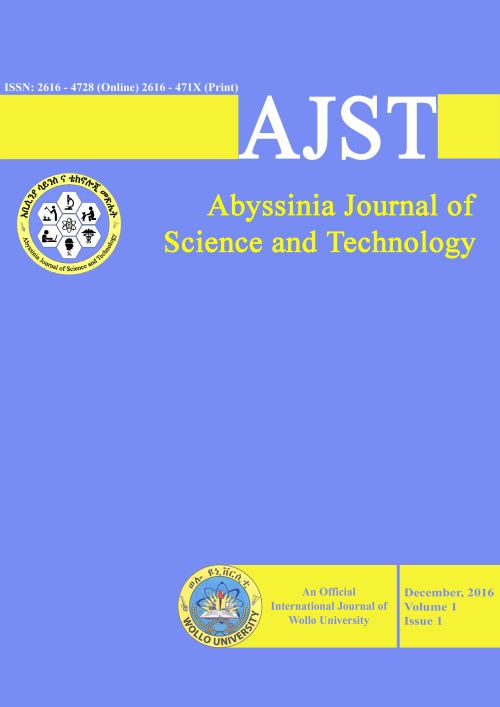Main Article Content
Application of NDVI in vegetation monitoring using GIS and remote sensing in northern Ethiopian highlands
Abstract
Vegetation plays an important role in stabilizing global environment. Reliable information on the status of vegetation using different techniques is necessary in solving environmental problems. Normalized Indifference Vegetation Index (NDVI) is a new technique that helps in quantifying vegetation cover change. Hence, the major objective of this paper is to apply NDVI in the assessment of vegetation monitoring using Geographic Information System (GIS) and Remote Sensing(RS)in Bahir Dar Zuria District. In this case, the NDVI analysis for vegetation cover change using1986 and 2003 satellite images was analyzed. NDVI indicators like (NDVI minimum, maximum, mean, and standard deviation) are computed for the year1986and 2003. The result of the present study showed that the maximum NDVI values are decreased from 0.9 in1986 to 0.16 in 2003. The minimum value of the NDVI increased from-0.8 in 1986 to-0.2 in 2003. In addition, the mean and standard deviation values decreased from 0.04 in 1986 to 0.03 in 2003 and from0.06in 1986 to 0.05 in 2003 respectively. The result showed that the average vegetation cover was decreased in2003 when compared to that of1986. This is due to an increased rate of deforestation, which in turn caused by increasing population pressure. As a result, there should be a change in policy to prevent the negative impact of land use and cover change and increase the agricultural productivity per unit area and the vegetation cover through different forest rehabilitation mechanisms (afforestation and reforestation).







